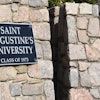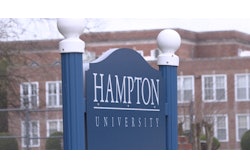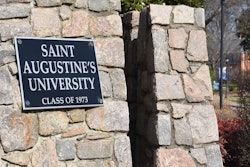By Scott Dyer
BATON ROUGE, La.
For decades three historically Black colleges and universities have called New Orleans home.
– Southern University-New Orleans (SUNO), founded in 1956 as a branch of a system known for producing a majority of the state’s Black lawyers.
– Xavier University of Louisiana, founded in 1915 and long known for sending the most African-American students to medical school of any in the United States.
– And Dillard University, founded in 1869, ranked just five weeks ago as one of the best liberal arts schools in the South by U.S. News and World Report.
Now the schools stand empty — their students, faculty and staff scattered to the four winds as Category 4 Hurricane Katrina blew off rooftops, uprooted trees, damaged lecture halls and classrooms and disrupted lives.
The SUNO campus is likely a complete loss due to Hurricane Katrina, says Dr. Edward R. Jackson, the acting president of the Southern University System.
The school — located just blocks from both Lake Pontchartrain and the Inner Harbor Navigation Canal — was flooded by up to 15 feet of water, says Jackson, who also serves as chancellor of Southern University and A&M College in Baton Rouge.
A week after the storm, there was still 7 to 8 feet of water in places, and Jackson says there is a good chance that the school’s physical plant is a total loss.
Although Jackson is hopeful that Southern’s New Orleans campus will eventually be rebuilt, he notes that in the meantime, about 3,200 SUNO students are without a school.
“About 99 percent of the students attending SUNO were from the New Orleans area, and many of them have lost their homes and everything they own — it’s truly devastating,” he says, adding that he fears some SUNO faculty and students may even have lost their lives.
Flooding was not as catastrophic at Dillard, a stately, tree-lined campus located in Gentilly, near City Park, or at Xavier, an urban campus in Midtown, near the Mississippi River and the Superdome. But drive-by surveys by the New Orleans’ Times-Picayune conducted as floodwaters receded revealed significant tree loss at Dillard and at least a few feet of flooding on the ground floors of both campuses.
Dr. Joseph Savoie, Louisiana Commissioner of Higher Education, was able to confirm reports that Dillard had lost three buildings to fire, though he did not know which ones.
Despite losing homes and their accustomed base of operations, officials at the schools have been hard at work assessing the damage and figuring out the next steps for campuses facing a possibly unprecedented situation.
“I have been spending 12 hours a day trying to respond to e-mails,” says Dr. Elizabeth A. Barron, vice president for academic affairs at Xavier. Barron evacuated to Memphis, Tenn., where she has been maintaining the campus Web site with updates and FAQs. She’s also working with other top Xavier officials via conference calls to Lafayette, La., and Washington, D.C., to share information and develop strategies for assisting faculty, staff and students — particularly students in the school’s large and renowned pre-medical program.
Xavier President Norm Francis confirmed rumors circulating on the Web that approximately 350 students had indeed been stranded on the campus during the storm, but he stressed that they were guarded by nearly 40 Xavier staff, including armed campus police, who volunteered to watch over them. Staff and students also had ample provisions, including hot meals cooked by the Sisters of the Blessed Sacrament and delivered by boat to students in their dormitories. The contingent at the campus was rescued on Sept. 1 by amphibious units and departed the city by bus approximately 12 hours later.
As for the future, Xavier has announced on its Web site that it would continue to pay faculty and staff salaries. But the most frequently asked question from the faculty has been “What can we do to help?” Barron says.
Key personnel first re-entered the campus on Sept. 16 to begin formal damage assessments, according to the Web site. Members of the campus community who lived “Uptown” in the Garden District and in Metairie and Algiers had been poised to return to their homes, but that clearance was revoked for safety reasons by New Orleans mayor Ray Nagin as Hurricane Rita threatened the region. The Web site warns that only authorized personnel will be allowed on campus.
At Dillard, meanwhile, officials evacuated students to Centenary College in Shreveport, La. And it’s from that base that officials are working on their recovery plan: developing, for example, a locator registry to allow faculty, staff, alumni and friends to make vital contacts. The university is also soliciting help from alumni, friends, corporations, foundations and others to rebuild the damaged infrastructure.
Dillard also plans to reopen next semester, but not on its own campus.
“We were underwater,” says president Marvalene Hughes. “I have talked to our engineers and we can’t resume classes on campus. We are looking for an alternative for the second semester [of this school year]. We plan to resume classes on our campus in Fall 2006.”
An estimated 1 million people fled the New Orleans area before Katrina made landfall on Aug. 29. The Louisiana Department of Labor estimates that 100,000 to 300,000 of the evacuees could be permanently displaced. There are 17 colleges and community and technical colleges in greater New Orleans. State higher education officials are estimating that approximately 73,000 college students have been displaced by the hurricane.
Thus, Louisiana schools are now bursting at the seams to accommodate the evacuees.
According to Jackson, Southern’s Baton Rouge campus has enrolled about 1,000 displaced students from the New Orleans areas, including 600 from SUNO. The extra students have increased total enrollment at the campus by about 10 percent, Jackson says.
He notes that many of the students attending the Baton Rouge campus are from the New Orleans area, explaining that some of them even sheltered family members from New Orleans in their Baton Rouge dorm rooms.
“We usually have pretty tight security in our dorms, but we all agreed to turn our heads, at least for a few days,” Jackson says.
He and his staff gave the relatives the green light to stay on the campus until classes resumed about a week later.
“At that point, we helped to find any of our students’ relatives who were still on campus a place to stay at one of the local church shelters,” Jackson says, adding that he also opened the university’s basketball arena to serve as an American Red Cross shelter.
“Different people have come and gone from the shelter — some are left to find jobs and relatives, while others have come in looking for shelter,” Jackson says. “We’ve told the Red Cross that they can continue to operate a shelter in that location for as long as they want, and they appreciate that.”
Southern University was not the only university in Baton Rouge that had to make dramatic adjustments due to the storm. Louisiana State University absorbed 3,200 displaced students, but was scrambling to provide housing for them. The university also converted its basketball arena into a medical triage center and morgue for victims of the hurricane.
LSU Chancellor Sean O’Keefe authorized the use of the Pete Maravich Activity Center for the triage hospital shortly after the storm. LSU also had to postpone its football season opener with the University of North Texas and played what should have been a home game against Arizona State University in Tempe, Ariz.
Meanwhile, Dr. Walter G. Bumphus, the chief of the Louisiana Community and Technical College System, was so busy dealing with the aftermath of Katrina that he wound up canceling a trip to Seattle, where
he was scheduled to be honored as chief executive officer of the year by the Association of Community College Trustees.
“All of us are working here seven days a week, 10 to 12 hours per day. To me, the real sign of leadership was staying here and working with our chancellors and our staff to get back to some degree of normalcy,” Bumphus says.
The devastation caused by Katrina forced the cancellation of the fall semester at Delgado Community College, Nunez Community College and several technical colleges in the New Orleans area.
Bumphus estimates that 21,305 Louisiana community college students and 1,400 faculty were displaced by the storm. The displaced students represent about 40 percent of the system’s enrollment.
Two weeks after the hurricane, Bumphus said half of the displaced students and faculty were still missing.
Despite the offer of free tuition at any Louisiana public institution for the fall semester, Bumphus says more displaced community college students are enrolling at out-of-state schools than at Louisiana colleges.
As of mid-September, Bumphus says about 600 community and technical college students had enrolled at the state’s other community colleges, including 400 at Baton Rouge Community College.
“We opened up registration after the storm to allow them to enroll free of charge at any of our institutions, and we’re trying hard to take care of their books and supplies and fees,” Bumphus says.
While Bumphus was trying to organize the community college system’s response to the disaster, he was also working to establish a number of new training programs to help evacuees find jobs.
“We’re going to go out to some of these shelters and do some training — and we want to offer the training free of charge to displaced individuals,” Bumphus says.
To help the rebuilding effort, he says LCTCS plans to offer crash courses in electrical trades, carpentry, welding, plumbing and hazardous material removal, all industries that will be vital in the reconstruction of the New Orleans and Gulf Shore areas.
With reporting by Diverse correspondent Cassie Chew.
© Copyright 2005 by DiverseEducation.com















